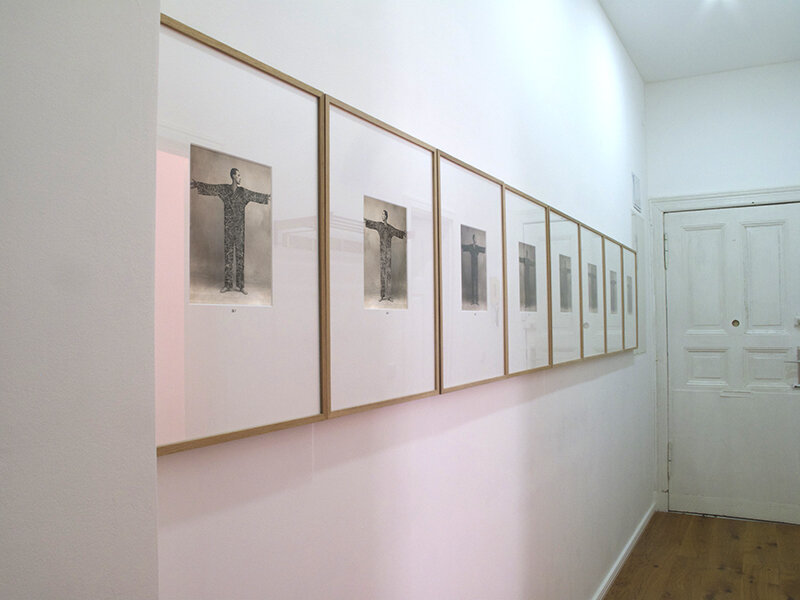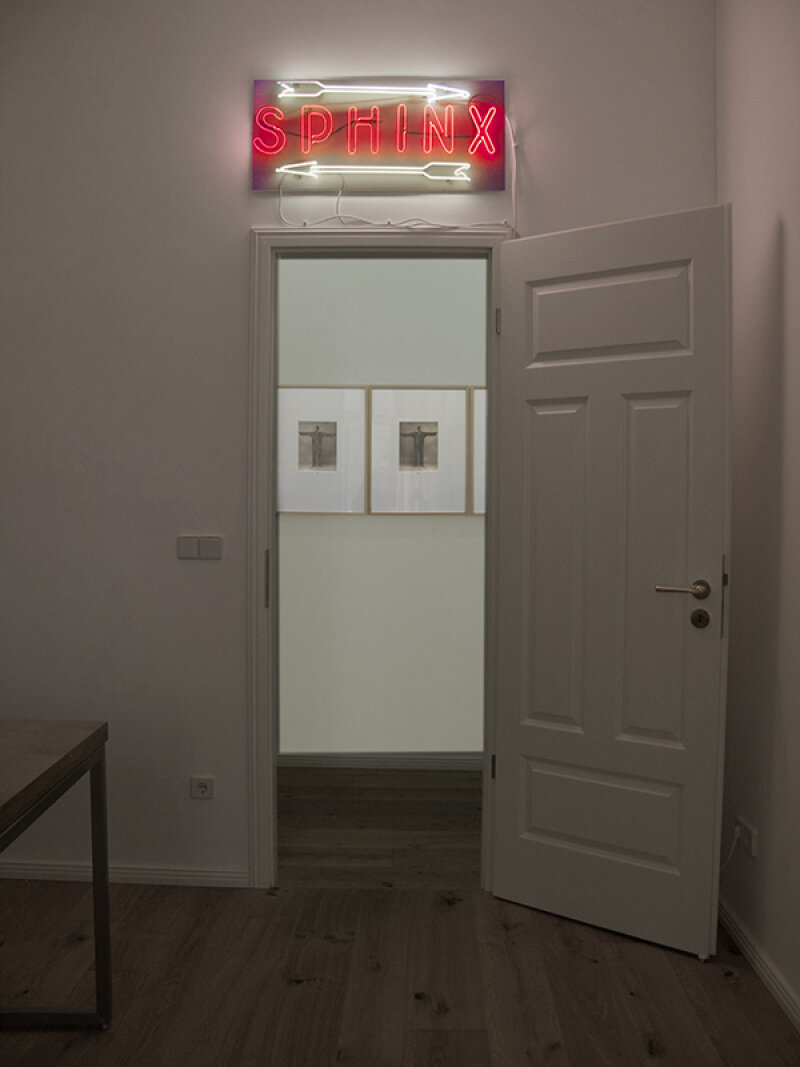Alexandra Hopf
21 April - 21 June 2016
Air Berlin Alexanderplatz
The future exhibition prototype presents a fragment of a new body of work inspirited by Alberto Giacometti’s text The Dream, the Sphinx, and the Death of T.. Hopf illustrates the story of late. Written in 1946 and published in the journal Labyrinthe Giacometti reveals his obsessions and anxieties while visually building his topography of remembrance. Reading from left to right in the hallway Hopf abstracts the first page of his text where he writes of his spider dream, which continues as he wakes up. Hopf has modified the text through its repetition. The reader enters a dream loop to discover illusory cycles. Her text piece is followed by eight black and white photographs of Space Time Suits; a reinterpretation of the famous overall, TuTa designed by Thayaht an Italian Futurist.1 Hopf’s life size overalls are of the same pattern but have been treated with oil and gouache. His arms reach out while his head looks towards the next identical photograph of - be as it may himself.
The poster between the windows announces the fictive future exhibition The Night without any text. Absent is Giacometti’s sculpture with the same name The Night (1947) owned by Philip Johnson. The sculpture has been interpreted as a sketch for a future monument. It once sat upon a Mies van der Rohe coffee table in Johnson’s home, The Glass House. Hopf’s poster appearing as once been folded, illustrates the work’s ambience, its shadow, pedestal and a backdrop. The scholar Espen Stueland says “Giacometti wanted to see the human body from a point beyond art itself, to annul art for the advantage of a kind of realism as something more than a representation of reality.”2
The open plan kitchen and studio is lit up in a red light. Above the door is the neon Sphinx, with arrows pointing in opposite directions above and below the letters reading ‘sphinx’. The Sphinx was the name of a nightclub / luxurious brothel in Montparnasse. Giacometti being present for its last night on October 6th 1946, finding it “a place more marvelous than any other.”3
1 The palindrome Thayath was Ernesto Michahelles’ (1893–1959) synonym. He was an artist who worked with Madeleine Vionnet between 1919 – 1925. Their together vision incorporated fashion as an expression of culture and progress. He contributed to the “Made in Italy” movement.
2 Alexander Carnera, “Giacometti and the Gesture of Creative Life”, In: CHARA – Journal of Creativity, Spontaneity and Learning, Vol. 1, No. 4 (2010), 473.
3 http://www.tate.org.uk/art/artworks/boswell-le-sphinx-t03460/text-catalogue-entry


